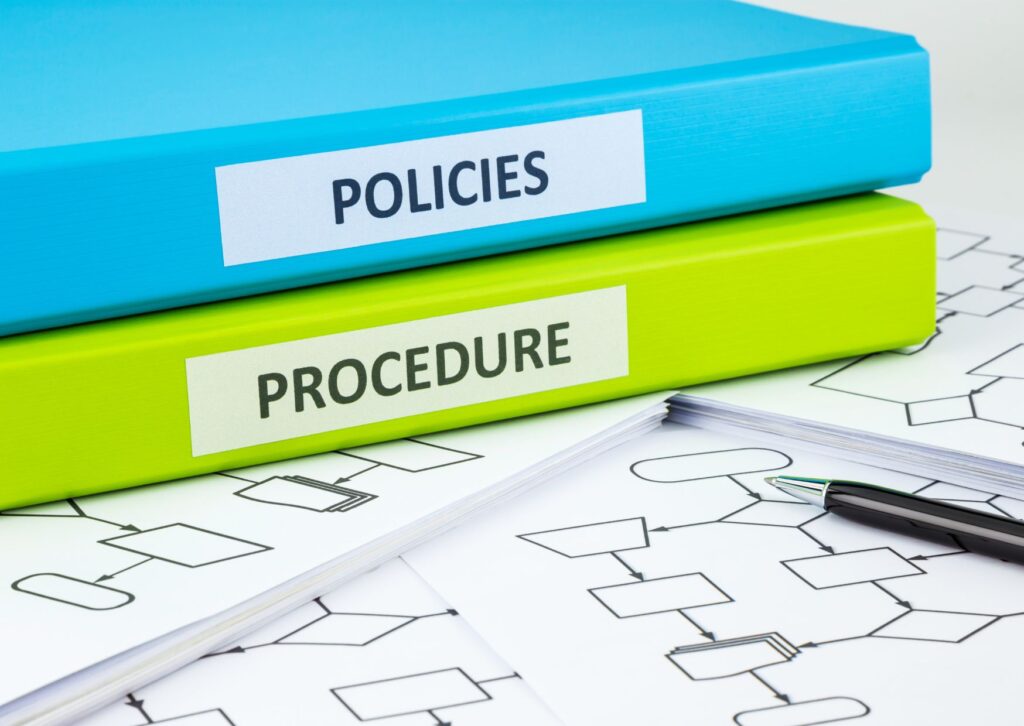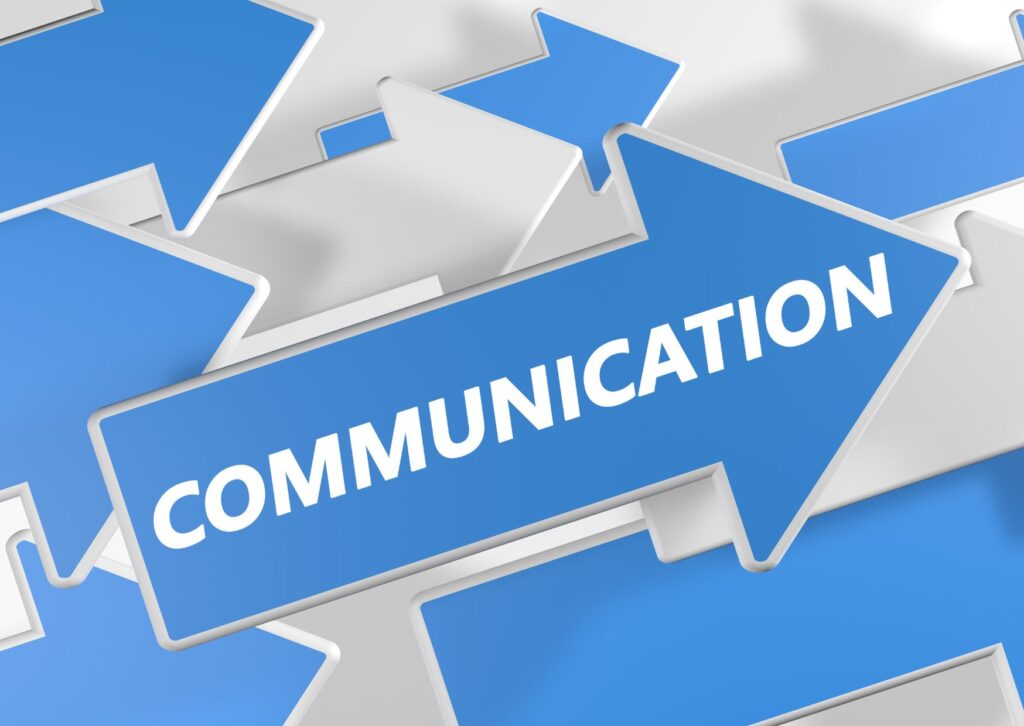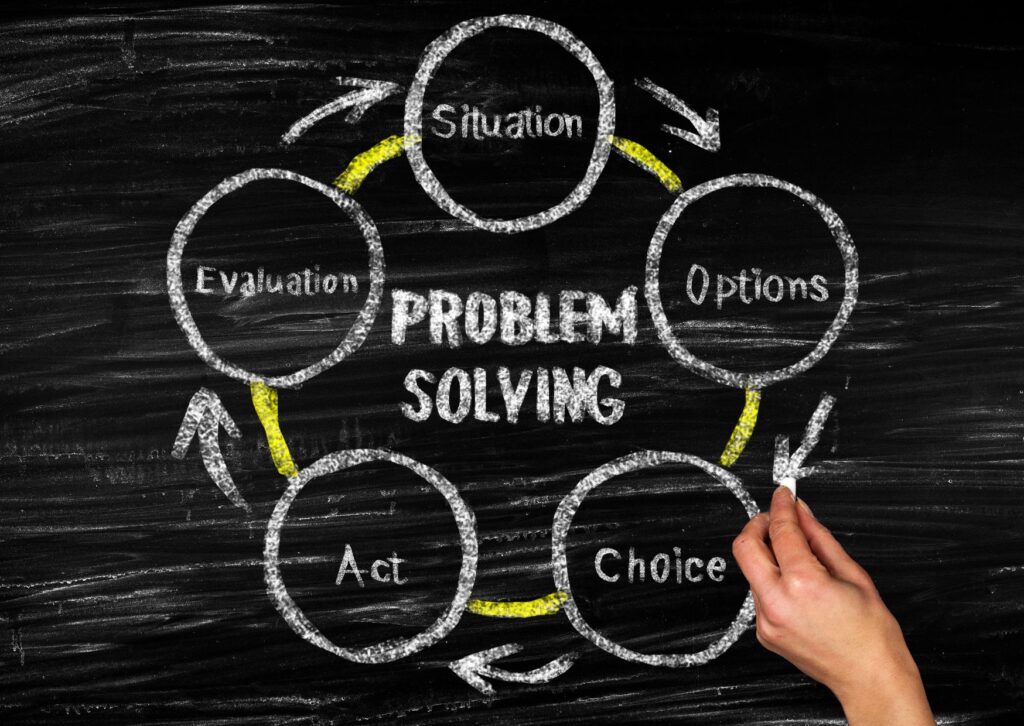Understanding Employee Relations: A Key to Organisational Success
The term “employee relations” is more than just a buzzword—it’s a pivotal aspect of any thriving organization.
But what does it truly entail, and why does it hold such weight in the modern business environment?
In this blog, we delve into the essence of employee relations, exploring its significance and how it can transform the workplace.
Contents
The Importance of Employee Relations
Employee Relations Policy: Ensuring a Harmonious Workplace
Best Practices for Managing Employee Relations
The Role of a Dedicated Employee Relations Manager in Shaping Workplace Culture
5 Examples of Employee Relations
What is Employee Relations?
Employee relations refers to the management of the relationship between employers and their employees.
It’s a critical component of human resource management that involves the company’s mission to a positive work environment.
Whether it’s resolving conflicts, addressing grievances, or maintaining workplace communication, an employee relations plan is essential to the employee experience.
Effective employee relations hinge on implementing consistent policies, safety procedures, good working conditions, and actively involving employees in decisions that affect their work life.

The Importance of Employee Relations
Employment relations can be seen as the backbone that supports the workforce, ensuring that the environment is not just productive but also nurturing.
Employee relations efforts can help to:
Boost Employee Morale
When employees feel that their concerns are acknowledged and their contributions valued, their morale skyrockets.
This enhanced morale is a catalyst for greater creativity and enthusiasm in their roles.
Reduce Workplace Conflicts
Effective employee relations strategies can significantly reduce the frequency and intensity of workplace conflicts.
This can reduce the chance of disgruntled employees, or negative employee attitudes.
Overall creating a happy and productive working environment.
Foster Loyalty and Reduce Turnover
Employees are more likely to remain loyal to a company that invests in healthy relationships.
Lower turnover rates translate to reduced costs in recruitment and training, and a retention of company knowledge and culture.
Improve Productivity
Employees who have mutual respect and good relations with their peers and superiors are more motivated to perform well and contribute to organizational goals.
Maintaining positive employee relations can be a massive contributing factor to employee productivity.
Attract Top Talent
A reputation for good employee relations is a powerful tool for attracting high-caliber professionals.
In an era where job seekers value company culture as much as salary, this can be a deciding factor for potential employees.
By understanding and prioritizing employee relations, organizations and hr departments can create a ripple effect of positive outcomes that extend far beyond the walls of the office.

Employee Relations Policy: Ensuring a Harmonious Workplace
Crafting a well-defined framework is integral to managing the dynamics between a company and its employee relationships.
This essential document sets the tone for interactions, promoting fairness, consistency, and compliance within the workplace.
The Significance of a Clear Framework in your Policy
Clarifying Expectations: Establishes standards for conduct, performance, and conflict management.
Consistency Across the Board: Guarantees uniform handling of employee-related matters throughout the organization.
Adherence to Legal Standards: Aligns organizational practices with legal obligations, reducing the risk of disputes.
Cultivating Positive Work Culture: Encourages a transparent and equitable environment, fostering trust, engaged employees and respect among staff.

Essential Components
Objectives: Outlining its goals and the extent of its applicability within the company.
Behavioural Guidelines: Clear directions on expected workplace conduct and ethics.
Conflict Resolution Protocols: Defined processes for resolving workplace disagreements and complaints.
Disciplinary Procedures: Outlining steps for managing disciplinary actions in a just manner.
Performance Management Guidelines: Standards for reviewing employee performance and feedback.
Legal Compliance Assurance: Commitment to upholding relevant labor laws and regulations.
Reporting Systems: Established avenues for voicing grievances or reporting policy violations.
Policy Review and Updates: Regular evaluation and modification to reflect current legal and operational changes.

Implementing the Framework
Widespread Communication: Ensuring all staff members are aware and understand the framework.
Managerial and HR Training: Equip the leadership team, HR professionals and HR departments with the skills to apply the framework effectively.
Easy Accessibility: Make the document readily available, such as on the company’s internal network.
Ensure employees understand how to access it.
Uniform Application: Consistent and fair enforcement across all levels of the organization.
This policy represents more than just regulations; it embodies the company’s commitment to its team.
By defining a clear employee relations process, it fosters a culture of collaboration and mutual respect.

Best Practices for Managing Employee Relations
To navigate the intricate landscape between employers and employees, organizations must adopt a strategic approach.
Here are some best practices that can guide the management of employee relations effectively:
Establish Clear Policies and Expectations
Clarity is key in preventing misunderstandings.
Establishing clear, written policies regarding employee conduct, grievance procedures, and other HR policies provides a strong foundation for mutual understanding.
Regular Training and Development
Investing in regular training and development not only advances employee skills but also shows that the organization values its workforce’s growth.
This, in turn, can help to maintain positive employee relations and improve the overall productivity of the team.
Promote Work-Life Balance
Respecting the personal time and boundaries of employees is crucial.
Encouraging a healthy work-life balance through flexible working arrangements can greatly contribute to the satisfaction of employees.

Recognize and Reward
Acknowledgment of hard work and achievements can be a powerful motivator.
Implementing recognition and reward systems reinforces positive behaviours and outcomes, which are essential for maintaining high spirits and motivation levels.
Engage in Active Listening
Active listening involves paying full attention to the employee voice.
Understand the message of employees, respond thoughtfully, and engage in open and honest conversations.
This practice should be a staple in all interactions within the organization to ensure employees are heard and respected.
Foster an Inclusive Environment
An inclusive workplace is one where diversity is valued and everyone has the opportunity to achieve their potential.
Inclusion is not just about avoiding discrimination, it’s about creating an environment where all differences are embraced.
Regular Check-Ins and Feedback
Continuous dialogue between management and employees helps to prevent employee relations issues.
Regular check-ins and constructive feedback sessions can help to prevent poor employee relations.
Empower Employees
Empowerment gives employees a sense of ownership and responsibility for their work.
This can be achieved by involving employees in decision-making processes and providing them with the autonomy to perform their roles effectively.

The Role of a Dedicated Employee Relations Manager in Shaping Workplace Culture
Employee relations managers plays a pivotal role in any organization, acting as the bridge between the workforce and management.
If there are any employee relations issues, these are the Hr professionals who are equipped to deal with them.
This role is crucial in cultivating a positive work environment, ensuring employee satisfaction, and aligning HR practices with the company’s mission.
Key Responsibilities of an Employee Relations Manager
Overseeing Employee Relations: Employee relations professionals are responsible for managing and improving the relationships between employees and the organization.
This includes handling employee grievances, employee misconduct, mediating disputes, conducting workplace investigations, and providing solutions to workplace issues.
Policy Development and Implementation: Developing and enforcing policies to ensure a fair and consistent approach to managing employees.
They ensure these policies comply with legal standards, health and safety regulations and reflect the organization’s values.
Advising Management and Staff
Offering expert advice to management on handling employee relations matters.
Providing guidance to staff on employee rights, company policies, and procedures.
Training and Development: Conducting training sessions for managers and employees on topics such as diversity, communication skills, and dispute resolution to promote a better understanding and implementation of employee relations practices.

Monitoring Workplace Trends: Keeping abreast of trends and changes in employment law and workforce demographics.
Ensure the organization’s policies and practices remain relevant and compliant.
Performance Management: Assisting in the design and implementation of performance evaluation systems.
Ensuring they are fair, transparent, and align with the company’s objectives.
Employee Engagement: Developing strategies to engage employees and enhance job satisfaction.
Whether it’s through surveys, feedback mechanisms, or other methods.
Implementing changes based on employee input to enhance the employee experience.

The Impact of an Employee Relations Manager
Enhancing Workplace Culture: By fostering open communication and resolving workplace issues effectively, they contribute to good employee relations company culture.
Reducing Turnover: Effective employee relations management can lead to higher employee satisfaction and retention, reducing turnover and its associated costs.
Ensuring Compliance: They play a key role in ensuring the organization adheres to labor relations laws and employment standards, reducing the risk of legal issues.
Driving Business Performance: By aligning employee relations strategies with business goals, they contribute significantly to the overall success and productivity of the organization.
The role of an employee relations manager is integral to the health and effectiveness of an organization.
Their employee relations skills help to handle employee issues, develop policies, and foster a positive relationship between a company and those who work for it.

Employee Relations Strategy
An effective strategy is vital for fostering a positive work environment and ensuring long-term company success.
This strategy encompasses several key elements, each playing a crucial role in building and maintaining a positive relationship between employee and employer.
Defining Clear Objectives
The first step in developing a good employee relations strategy is to define clear, attainable objectives.
These objectives should align with the overall business goals.
They should encompass aspects like improving communication, keeping employees engaged, supporting employee wellbeing and reducing workplace conflicts.
Building Open Communication Channels
Open and transparent communication is the foundation of any strong employee relations strategy.
Employers should encourage an environment where feedback is not just welcomed but actively sought.
Regular staff meetings, anonymous feedback tools, and open-door policies are effective ways to foster open communication.

Fostering a Culture of Respect and Inclusion
A respectful and inclusive company culture enhances employee relations.
This involves recognising and celebrating diversity, ensuring fair treatment of all employees.
Create an environment where every voice is valued.
Training sessions on diversity, equity, and inclusion can be instrumental in promoting this culture.
Implementing Effective Conflict Resolution Practices
Conflicts, if left unresolved, can disrupt workplace harmony.
A robust strategy should include clear procedures for employee issues, ensuring that disputes are managed fairly and efficiently.
Providing training for managers in conflict management and mediation skills is also beneficial.
Investing in Employee Development
Employee growth is a critical component of a successful employee relations strategy.
Regular training, career development programs, and opportunities for professional growth demonstrate a company’s investment in its employees’ future.
This not only boosts morale but also aids in employee retention.
Prioritising Employee Wellbeing
The wellbeing of employees should be a key focus of any employee relations policies.
Initiatives like flexible working arrangements, wellbeing workshops, and mental health support can significantly contribute to employees’ overall wellbeing and job satisfaction.

Continuous Evaluation and Adaptation
Lastly, an effective employee relations strategy requires ongoing evaluation and adaptation.
Regularly assess the effectiveness of your strategy and make necessary adjustments.
This ensures that the strategy remains aligned with both the company’s and employees’ evolving needs.
Positive Employee Relations
Positive employee relations are crucial in creating a workplace that is not just productive but also supportive and engaging.
This concept goes beyond the mere absence of conflicts; it involves cultivating a work environment where employees are genuinely connected to their work and valued by their company.
The Benefits
Increased Productivity: Employees who have positive relationships with their colleagues and management are more likely to be motivated and committed to their work.
This can lead to higher productivity levels.
Enhanced Employee Engagement: Positive relations foster a sense of belonging and engagement, making employees more invested in the company’s success.
Reduced Turnover: When employees feel appreciated and supported, they are less likely to seek employment elsewhere, reducing turnover and associated costs.
Improved Workplace Morale: A positive work environment boosts morale, leading to a more pleasant and collaborative workplace for everyone.
Better Problem-Solving: Positive relations encourage open communication, making it easier to resolve issues and innovate.

How to Cultivate Positive Employee Relations
Recognizing and Valuing Employees: Regular recognition of employees’ efforts and contributions goes a long way in building positive relations.
This can be through formal awards, shout-outs in meetings, or simple thank-you notes.
Promoting Effective Communication: Encourage open and honest communication across all levels of the organization.
This includes not just speaking but active listening from management.
Fostering Team Collaboration: Create opportunities for team bonding and collaboration through team-building activities, collaborative projects, and social events.
Ensuring Fair and Equitable Treatment: Fair treatment of all employee relations issues, regardless of the staff role or background, is fundamental to maintain positive employee relations.
This includes equitable opportunities for growth and development.
Providing Support for Work-Life Balance: Supporting employees in achieving a healthy work-life balance shows that the organization cares about their well-being beyond the workplace.
Offering Professional Growth Opportunities: Employees feel valued when they see investment in their professional development. This can be through training, mentorship programs, or clear career advancement paths.

5 Examples of Employee Relations
Employee relations encompass various aspects of the employment relationship between employers and employees.
Here are five examples that illustrate the importance of employee relations in an organization:
1. Health and Wellness Initiatives
Prioritizing the health and safety of many employees, a company introduces wellness programs including flexible hours and mental health support.
This initiative, often outlined in the employee handbook, demonstrates a strong commitment to the overall wellbeing and work-life balance of staff.
Check out our blog on “15 Employee Wellness Ideas and Initiatives“

2. Regular Employee Surveys
An HR department conducts annual surveys to gather compensation data, workplace satisfaction insights, and feedback on HR and employee relations policies.
By regularly surveying employees, the company ensures that their voices are heard and acted upon.
This can enhance employee engagement and satisfaction.
3. Conflict Resolution through Collective Relationships
In a scenario where collective relationships are strained, HR professionals mediate discussions between conflicting parties.
This could involve aspects of joint conversations if it relates to broader employee benefits or working conditions.
This helps to establish the role of human resources in maintaining harmonious employer-employee relations.
4. Training and Development Opportunities
A company’s human resources team organizes ongoing professional development programs.
These opportunities are crucial for the career growth of employees.
5. Flexible Work Arrangements
To accommodate the diverse needs of its workforce, an organization offers various flexible working options.
This decision, often a result of collective bargaining or feedback from surveyed employees, reflects the company’s adaptability and respect for the individual circumstances of its employees.
Each of these examples highlights how employee relations important facets are incorporated into everyday practices.
This helps to enhance the dynamic between employers and employees.
These examples of employee relations initiatives, from health and wellness initiatives to flexible work arrangements, demonstrate the commitment of the HR department and management to foster a positive and supportive work environment.

Understanding and nurturing employee relations is not just a matter of policy, but a strategic approach that can significantly impact the success and sustainability of an organization.
By fostering a respectful environment, promoting open communication, and creating an inclusive culture, companies can unlock the full potential of their workforce.
Author
Tyler Lowe – Health & Wellbeing Speaker
BSc Sport & Exercise Rehabilitation


